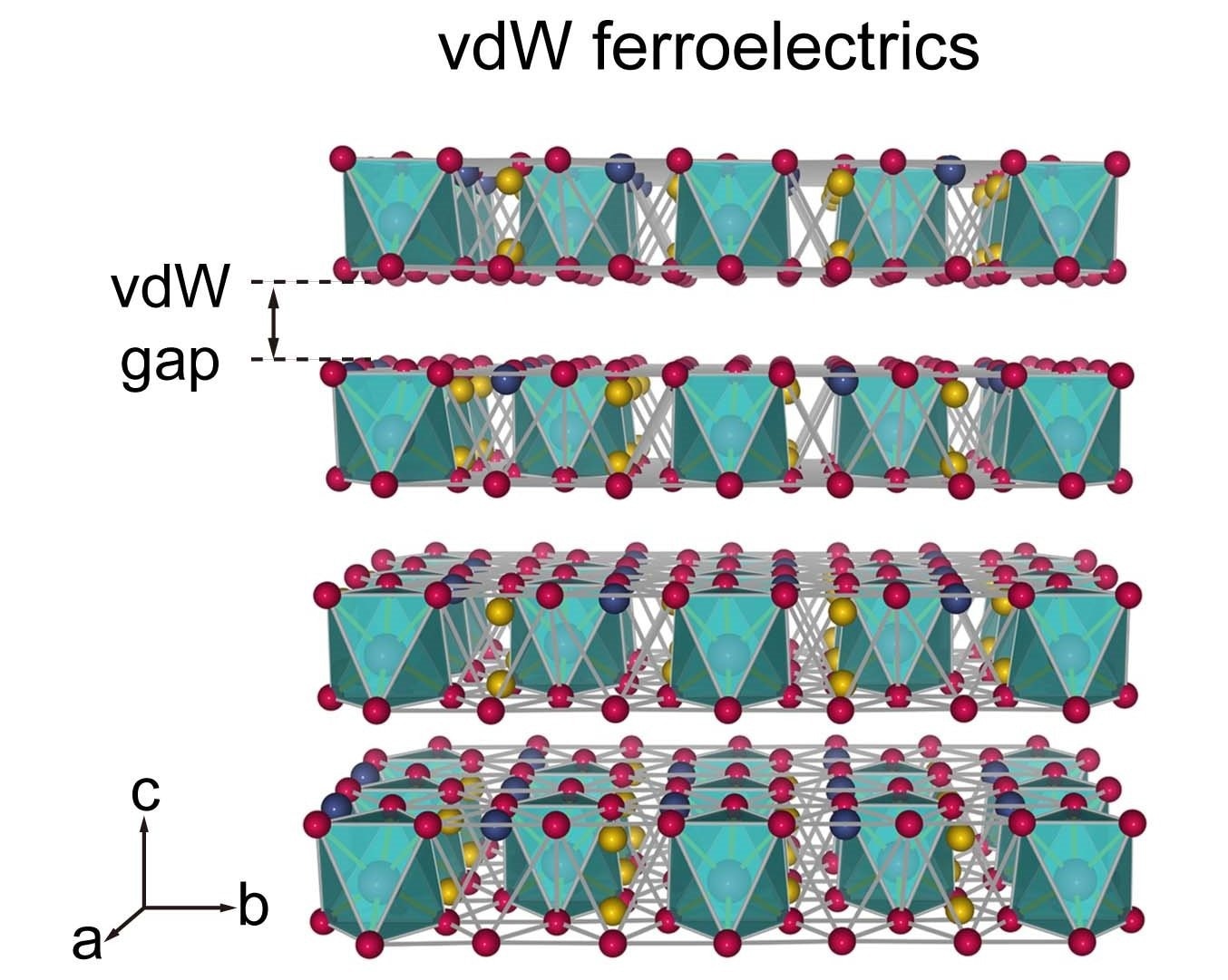Reviewed by Mila PereraOct 28 2022
A University of New South Wales (UNSW) article in the journal Nature Reviews Materials describes an overview of the evolving domain of two-dimensional (2D) ferroelectric materials with layered van-der-Waals (vdW) crystal structures: a unique group of low-dimensional materials that is exciting for advanced nanoelectronics.

Van-der-Waals ferroelectrics have stable, layered structures with strong intralayer and weak interlayer forces. Image Credit: FLEET, UNSW.
Future applications include high-response optoelectronics, ultra-low energy electronics, high-performance, non-volatile data storage, and flexible (wearable or energy-harvesting) electronics.
Structurally diverse from traditional oxide ferroelectrics with stiff lattices, vdW ferroelectrics possess stable layered structures with robust intralayer and weak interlayer forces.
These unique atomic configurations, along with the ferroelectric order, generate primarily new occurrences and functionalities unavailable in traditional materials.
Fundamentally new properties are found when these materials are exfoliated down to atomically thin layers. For example, the origin of the polarization and the switching mechanisms for the polar order can be different from conventional ferroelectrics, enabling new material functionality.
Dr. Dawei Zhang, Study Lead Author, University of New South Wales
One of the most captivating features of these materials is their simple stackable nature owing to the weak vdW interlayer bonds, which means that vdW ferroelectrics are easily integrable with extremely dissimilar crystal-structure materials, for example, industrial silicon substrates, without interfacial problems.
This makes them highly attractive as building blocks for post-Moore’s law electronics.
Professor Jan Seidel, Corresponding Author, FLEET CI, University of New South Wales
From the viewpoint of applications and unique functionalities, vdW ferroelectrics offer a broad variety of opportunities for nanoelectronics owing to their effortlessly obtainable ferroelectricity at the nanometer scale, and dangling bonds-free, clean vdW interfaces that enable CMOS-friendly (current silicon technology) integration.
The new article illustrates experimentally confirmed vdW ferroelectric platforms and their exclusive features, such as metallic ferroelectricity, quadruple-well potentials, and dipole-locking effects. It also discusses controlled vdW ferroelectricity in stacks of otherwise nonpolar parent materials developed by forcedly breaking centrosymmetry.
Furthermore, advanced device applications exploiting vdW ferroelectricity are presented, including electronic transistors that can go beyond non-volatile memories, central thermodynamic limits, and optoelectronic and flexible devices. The latest advancement and current challenges offer an outlook on future research routes and applications.
It’s a relatively new field, so there are still many challenges that need to be solved to realize the full technological potential of these materials. For example, we need to address large-area, uniform, wafer-scale growth, and integration methods. These will allow development of futuristic low-energy electronics and computing solutions.
Dr. Pankaj Sharma, Corresponding Author, FLEET Research Fellow, FLEET CI, University of New South Wales
Given the latest evolution of vdW ferroelectrics, the materials library of these systems is rapidly developing. This paves the way for new developments, namely, multiferroicity and coupled functionalities of multiple orders, for example, magnetism and ferroelectricity, and the functionality of domain walls in such materials.
Journal Reference
Zhang, D., et al. (2022) Ferroelectric order in van der Waals layered materials. Nature Reviews Materials. doi.org/10.1038/s41578-022-00484-3.